![]()
NvSRAM is promising for IoT applications where devices operate in low activity frequency and standby leakage current essentially dominates the energy consumption. Among various proposed nvSRAMs, the 6T2C structure uses FeCaps as the non-volatile elements, and becomes one of the most encouraging options in terms of density and cost, especially after the discovery of ferroelectricity in CMOS-compatible HfO2. The proof-of-concept of the 6T2C nvSRAM with HfO2 FeCaps has been experimentally demonstrated by M. Kobayashi et al. However, a deep analysis of the 6T2C nvSRAM based on Hafnia FeCaps including its working principle and performance optimization is still lacking, which is critical for the further development of such technology.
This work comprehensively evaluates the performance of Hafnia-FECap-based 6T2C nvSRAM through simulations. The interplay between properties of transistors and FECaps is presented, and optimization strategies are proposed.
 Ferroelectric Random-Access Memory (FeRAM) based on HfxZr1-xO2 materials has garnered widespread attention due to its high speed, excellent scalability, and compatibility with CMOS processes. However, the reliability of these devices is a key issue affecting their large-scale application. In read-intensive applications such as storage and artificial intelligence (AI), ferroelectric capacitors are neither frequently rewritten (as in traditional endurance tests), nor maintained in the same polarization state for a long period (as in traditional retention tests). Therefore, the reliability degradation and underlying physical mechanisms of devices in these application scenarios necessitates in-depth research.
Ferroelectric Random-Access Memory (FeRAM) based on HfxZr1-xO2 materials has garnered widespread attention due to its high speed, excellent scalability, and compatibility with CMOS processes. However, the reliability of these devices is a key issue affecting their large-scale application. In read-intensive applications such as storage and artificial intelligence (AI), ferroelectric capacitors are neither frequently rewritten (as in traditional endurance tests), nor maintained in the same polarization state for a long period (as in traditional retention tests). Therefore, the reliability degradation and underlying physical mechanisms of devices in these application scenarios necessitates in-depth research.
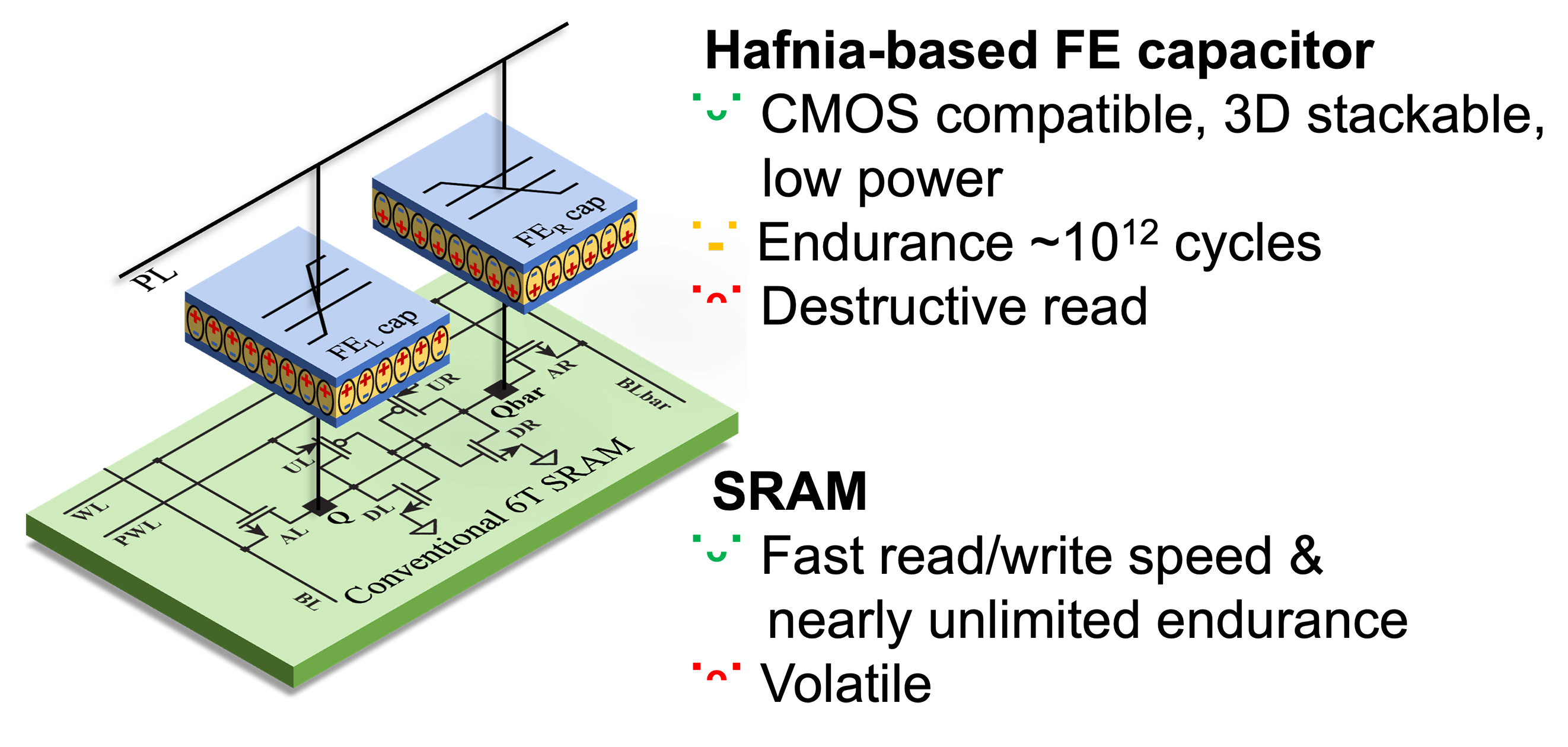

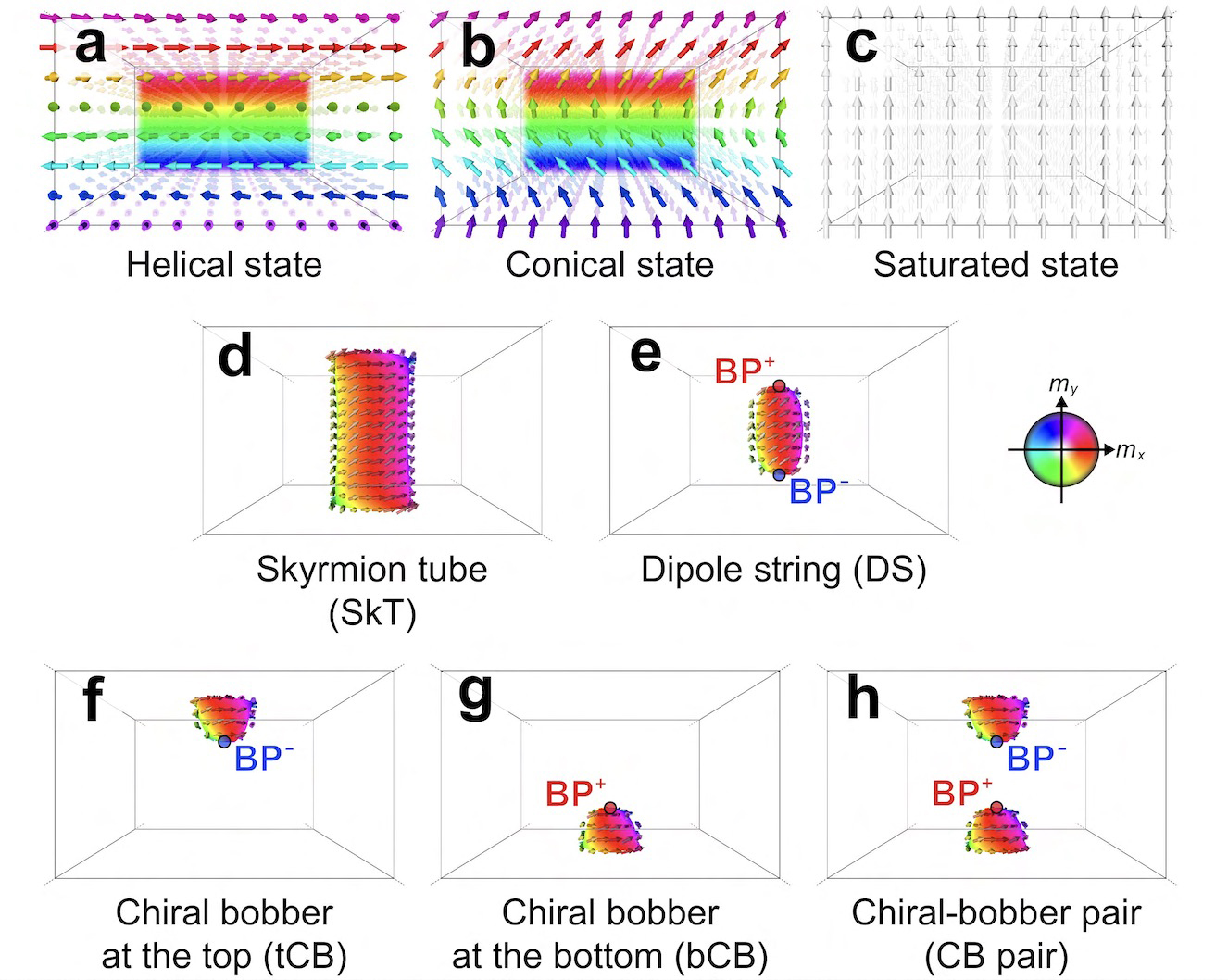 This study explores the stabilities of various topological spin textures in chiral magnets, such as chiral bobbers, dipole strings, and skyrmion tubes, against homochiral states. The study demonstrates multiple transition paths among these textures mediated by Bloch-point singularities and how the energy landscape of a magnetic system can be tailored by modulating local material properties. The key findings include ...
This study explores the stabilities of various topological spin textures in chiral magnets, such as chiral bobbers, dipole strings, and skyrmion tubes, against homochiral states. The study demonstrates multiple transition paths among these textures mediated by Bloch-point singularities and how the energy landscape of a magnetic system can be tailored by modulating local material properties. The key findings include ...

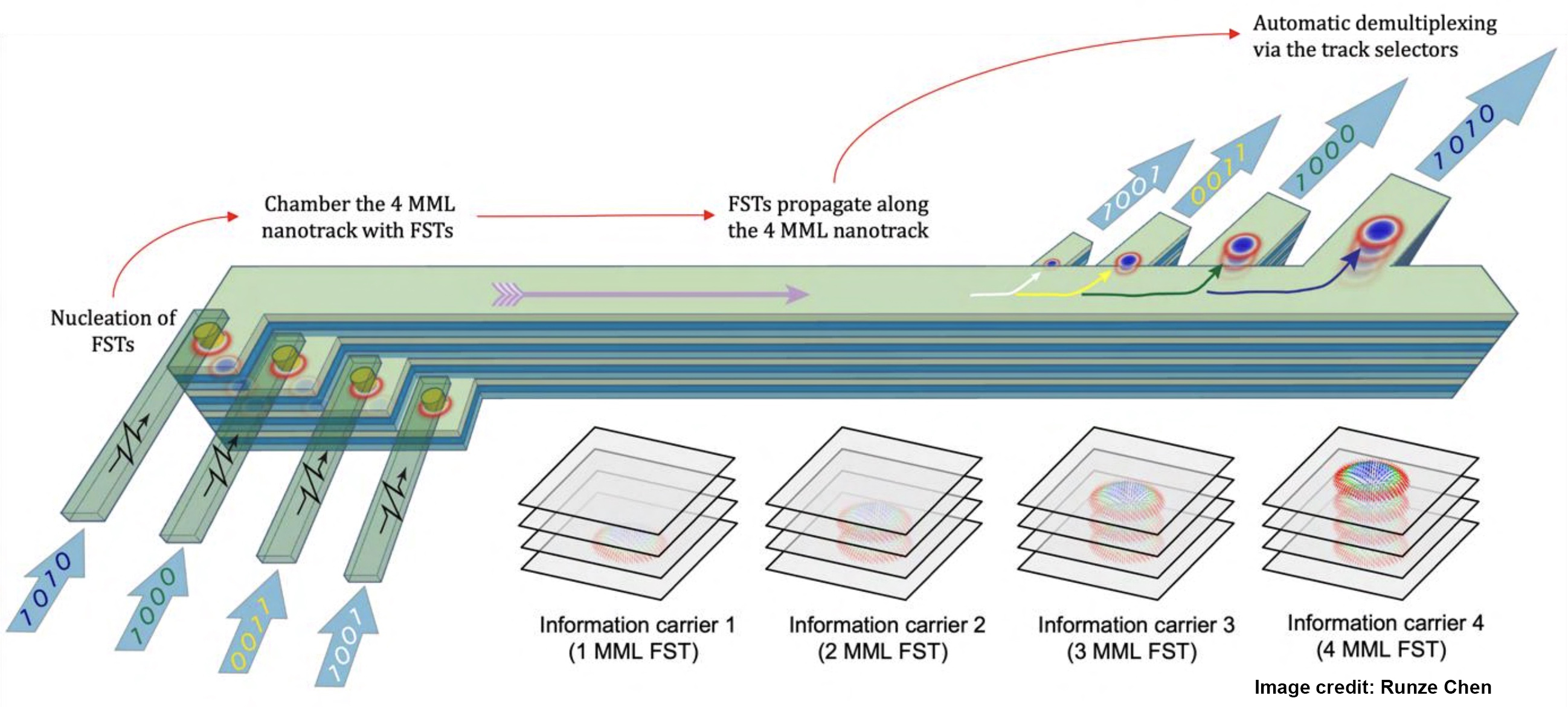 Tailored magnetic multilayers (MMLs) provide skyrmions with enhanced thermal stability, leading to the possibility of skyrmion-based devices for room temperature applications. At the same time, the search for additional stable topological spin textures has been under intense research focus. Besides their fundamental importance, such textures may expand the information encoding capability of spintronic devices. However, fractional spin texture states within MMLs in the vertical dimension have yet to be investigated. In this work, we demonstrate numerically fractional skyrmion tubes (FSTs) in a tailored MML system ...
Tailored magnetic multilayers (MMLs) provide skyrmions with enhanced thermal stability, leading to the possibility of skyrmion-based devices for room temperature applications. At the same time, the search for additional stable topological spin textures has been under intense research focus. Besides their fundamental importance, such textures may expand the information encoding capability of spintronic devices. However, fractional spin texture states within MMLs in the vertical dimension have yet to be investigated. In this work, we demonstrate numerically fractional skyrmion tubes (FSTs) in a tailored MML system ...
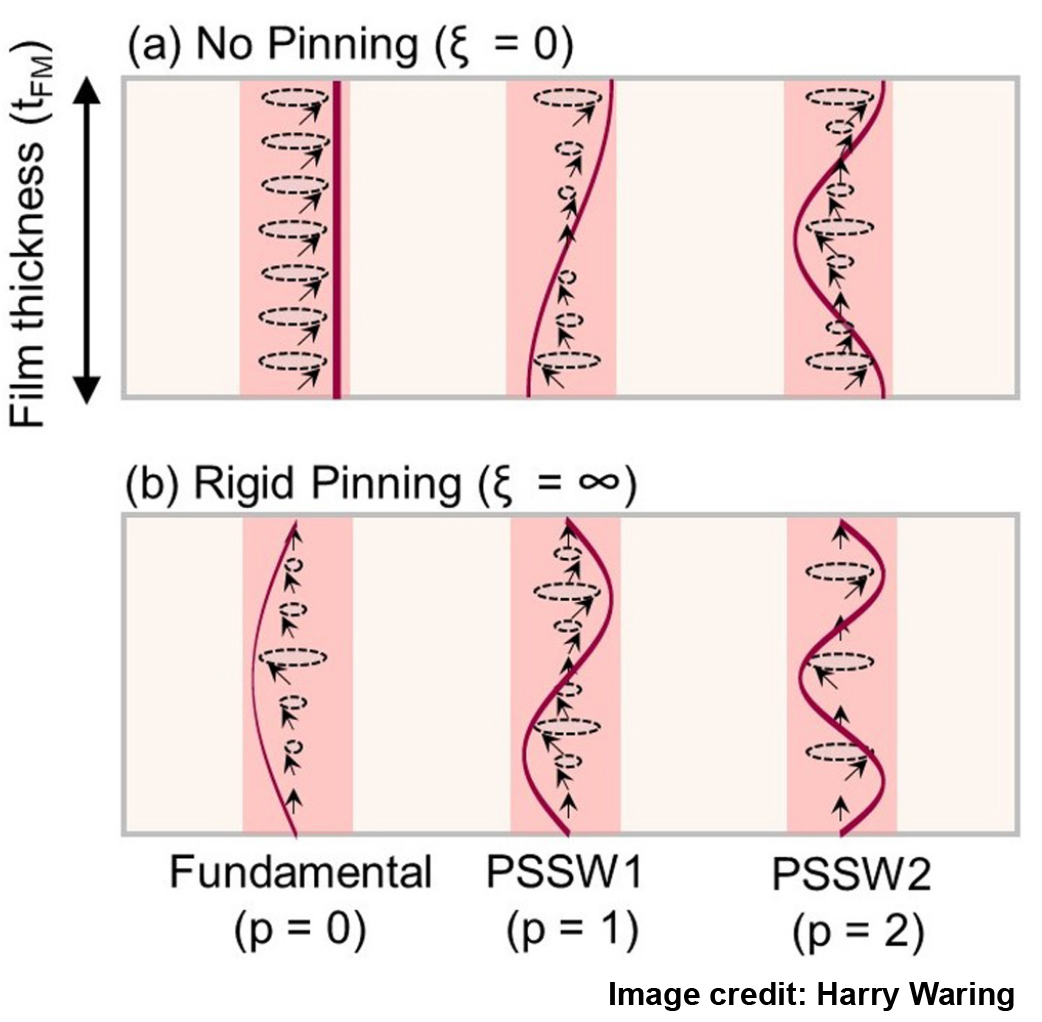 The exchange stiffness constant is recognized as one of the fundamental properties of magnetic materials, though its accurate experimental determination remains a particular challenge. In thin films, resonance measurements exploiting perpendicular standing spin waves (PSSWs) are increasingly used to extract this parameter, typically through a determination of the first-order PSSW mode. Here, we present a systematic study of multiple PSSW modes in NiFe films, where both the sample thickness and the cap layer material are varied. The results show that a simple analysis based on the Kittel rigid pinning model yields an exchange stiffness constant that varies with thickness, mode number, and capping layer material ...
The exchange stiffness constant is recognized as one of the fundamental properties of magnetic materials, though its accurate experimental determination remains a particular challenge. In thin films, resonance measurements exploiting perpendicular standing spin waves (PSSWs) are increasingly used to extract this parameter, typically through a determination of the first-order PSSW mode. Here, we present a systematic study of multiple PSSW modes in NiFe films, where both the sample thickness and the cap layer material are varied. The results show that a simple analysis based on the Kittel rigid pinning model yields an exchange stiffness constant that varies with thickness, mode number, and capping layer material ...
 Magnetic skyrmions have been in the spotlight since they were observed in technologically relevant systems at room temperature. More recently, there has been increasing interest in additional quasiparticles that may exist as stable/metastable spin textures in magnets, such as the skyrmionium and the antiskyrmionite (i.e., a skyrmion bag with two skyrmions inside) that have distinct topological characteristics. The next challenge and opportunity, at the same time, is to investigate the use of multiple magnetic quasiparticles as information carriers in a single device for next-generation nanocomputing. In this paper, we propose a spintronic interconnect device where multiple sequences of information signals are encoded and transmitted simultaneously by skyrmions, skyrmioniums, and antiskyrmionites ...
Magnetic skyrmions have been in the spotlight since they were observed in technologically relevant systems at room temperature. More recently, there has been increasing interest in additional quasiparticles that may exist as stable/metastable spin textures in magnets, such as the skyrmionium and the antiskyrmionite (i.e., a skyrmion bag with two skyrmions inside) that have distinct topological characteristics. The next challenge and opportunity, at the same time, is to investigate the use of multiple magnetic quasiparticles as information carriers in a single device for next-generation nanocomputing. In this paper, we propose a spintronic interconnect device where multiple sequences of information signals are encoded and transmitted simultaneously by skyrmions, skyrmioniums, and antiskyrmionites ...
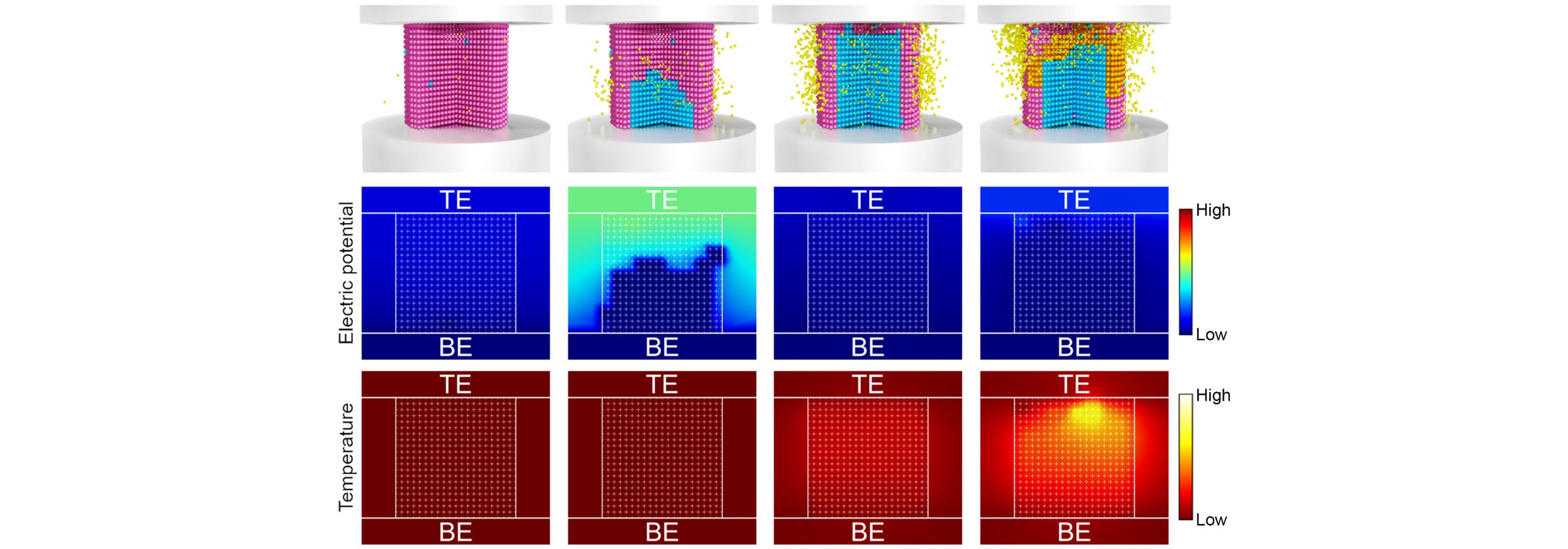
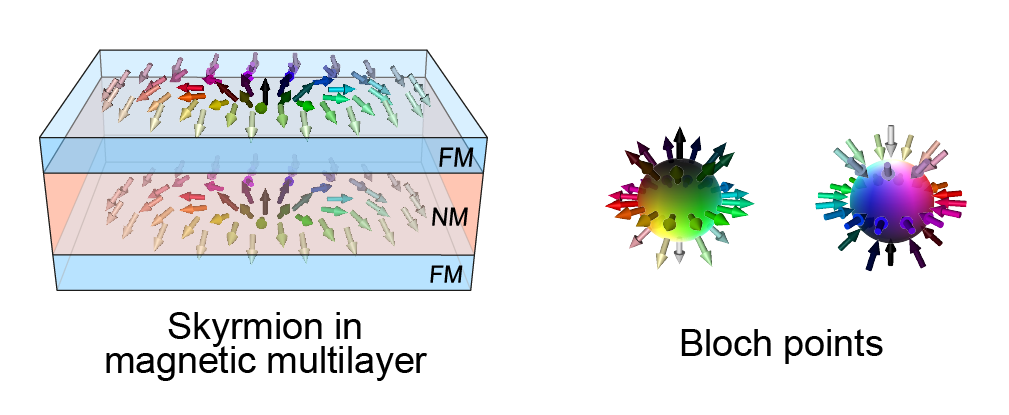 Magnetic multilayers are promising tunable systems for hosting magnetic skyrmions at/above room temperature. Revealing their intriguing switching mechanisms and associated inherent electrical responses are prerequisites for developing skyrmionic devices. In this Letter, we theoretically demonstrate the annihilation of single skyrmions occurring through a multilayer structure, which is mediated by the hopping dynamics of topological hedgehog singularities ...
Magnetic multilayers are promising tunable systems for hosting magnetic skyrmions at/above room temperature. Revealing their intriguing switching mechanisms and associated inherent electrical responses are prerequisites for developing skyrmionic devices. In this Letter, we theoretically demonstrate the annihilation of single skyrmions occurring through a multilayer structure, which is mediated by the hopping dynamics of topological hedgehog singularities ...